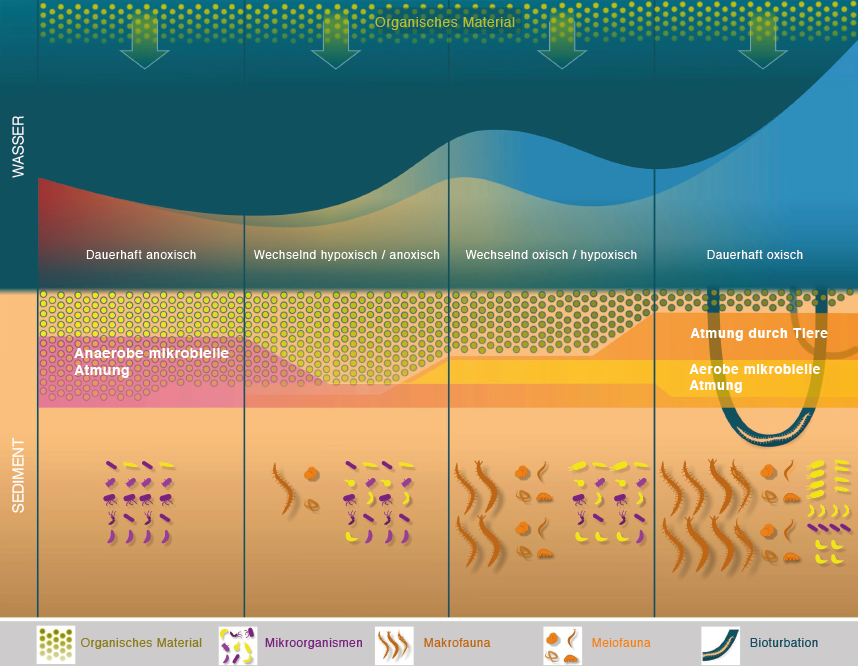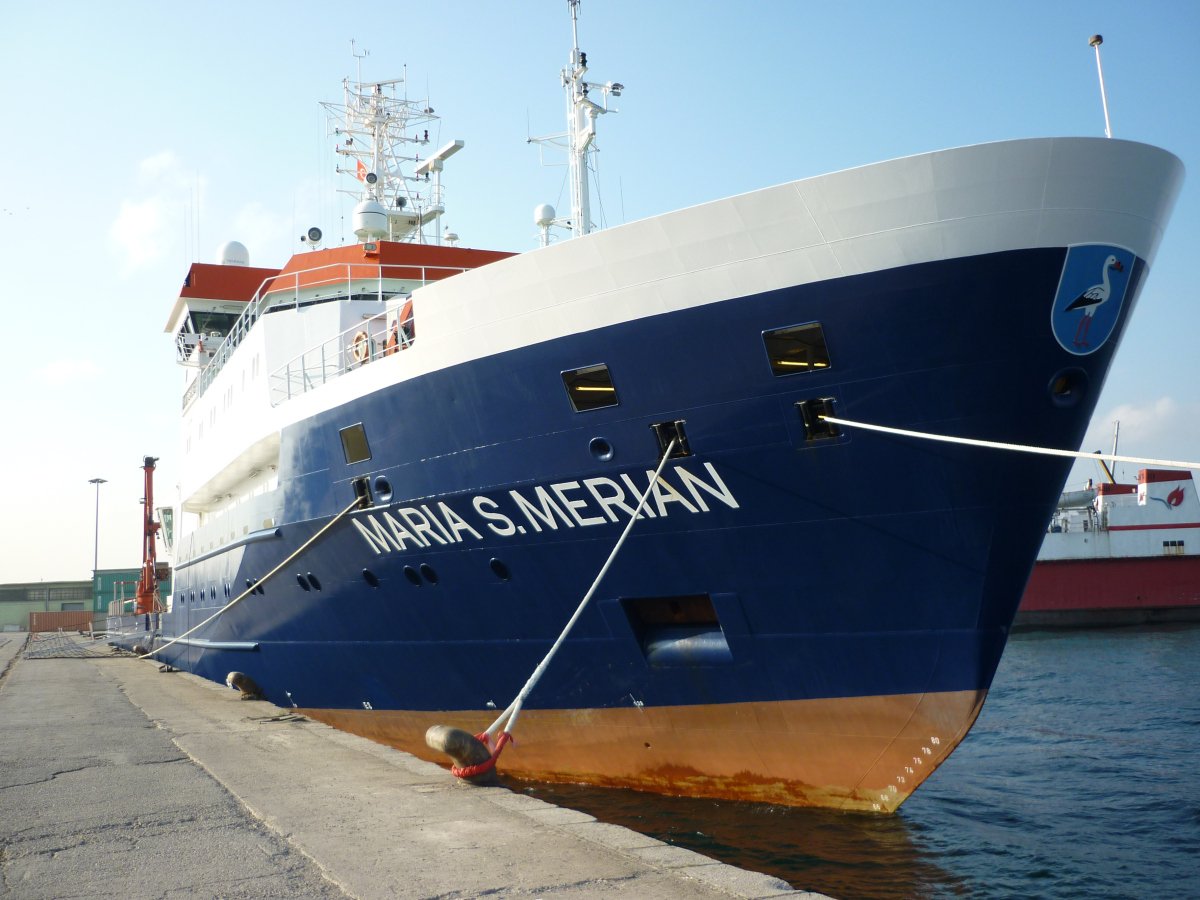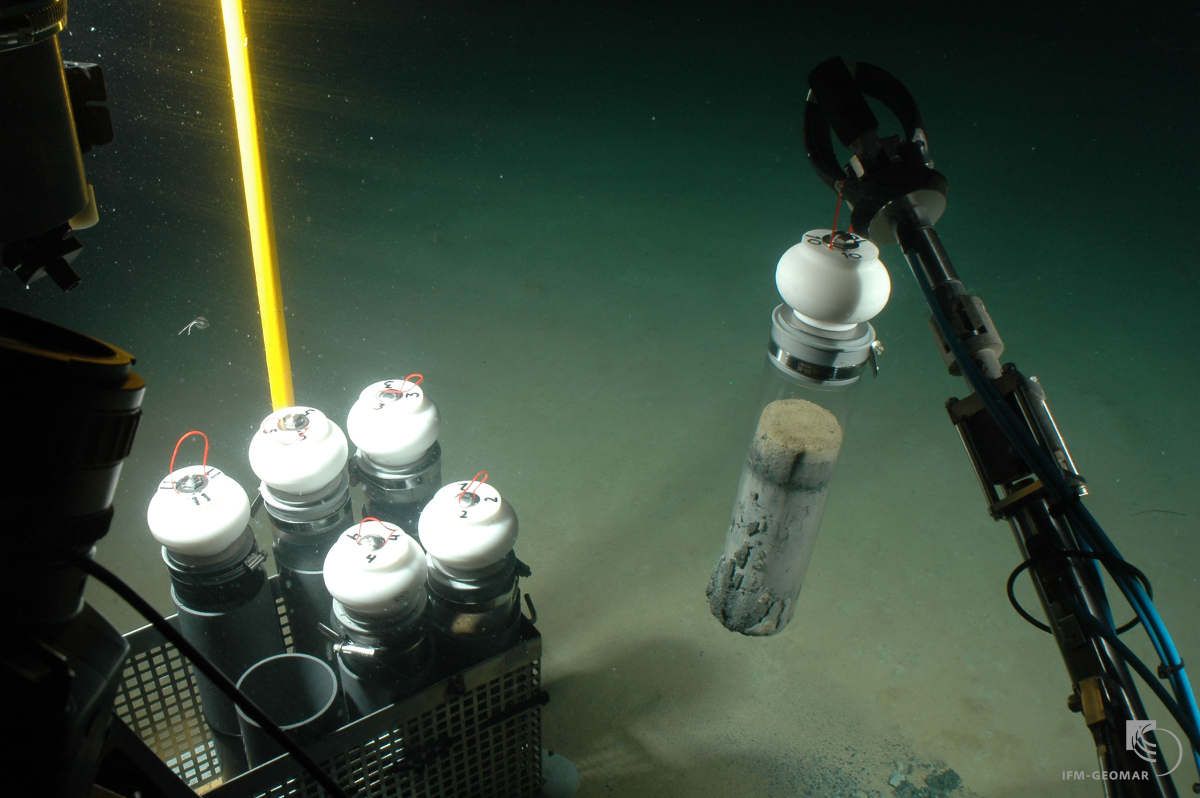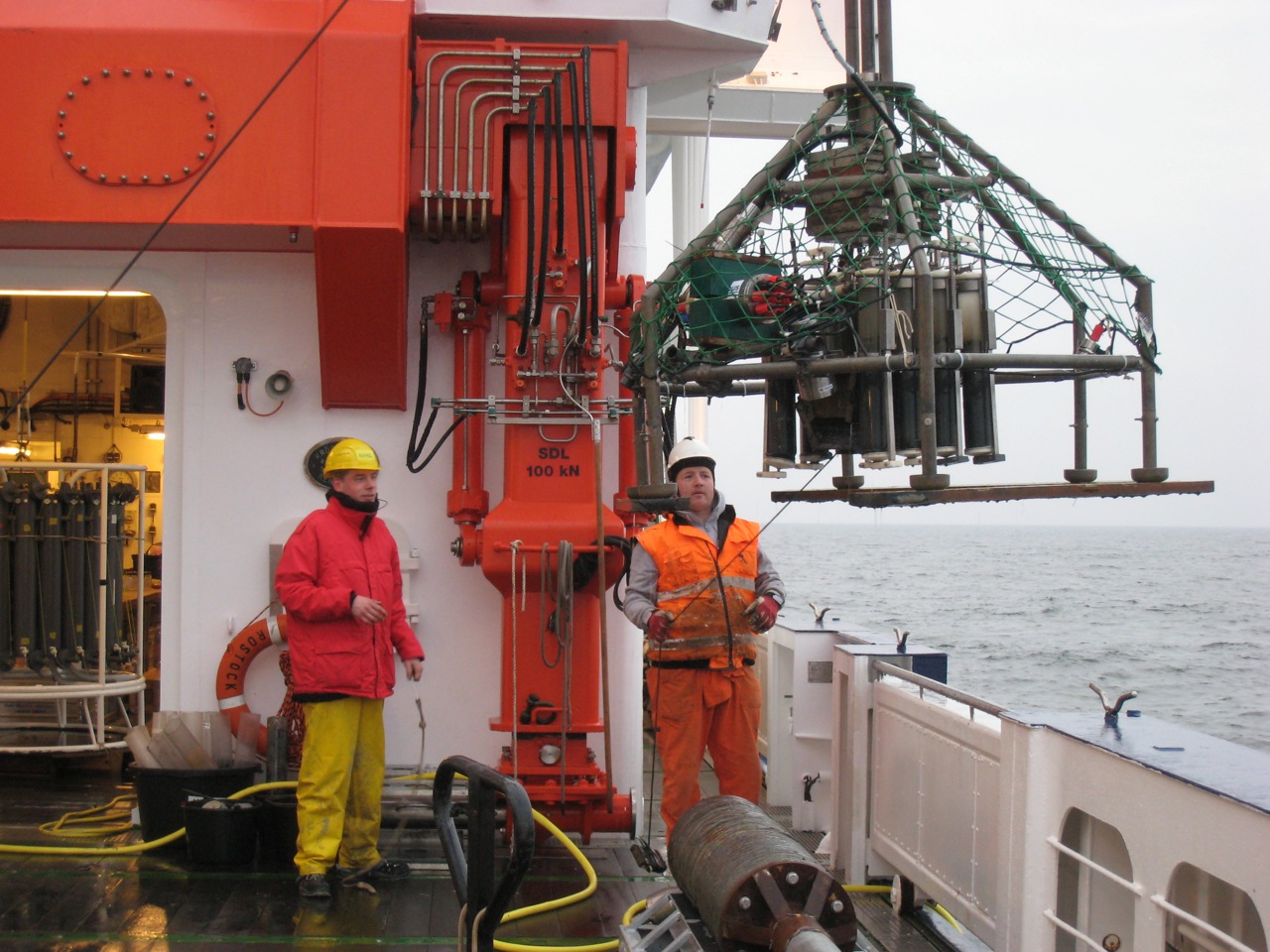- Press Office
- Breath-taking moments in the Black Sea
Breath-taking moments in the Black Sea: Periodic hypoxia affects seafloor fauna and carbon turnover for decades
The seafloor plays a key role in the global elemental cycles. Its inhabitants consume and recycle organic matter sinking to the bottom. Usually, only a minor part of that material gets buried in the seafloor. The lion’s share is remineralised by seafloor life – i.e. broken down and fed back to the ecosystem for the production of new biomass. Thus, the fate of this material at the seafloor crucially impacts global carbon and nutrient cycling and, as a consequence, marine productivity and our climate.
Temporary shortage, long-term storage
Animals need oxygen to breathe. Hence, declining bottom-water oxygen supply negatively impacts the community composition and activity of marine sediments. To which extent it also determines remineralisation and thus carbon burial rates remained controversial.Gerdhard Jessen from Max Planck Institute for Marine Microbiology in Bremen, Germany, and an international team of researchers reveal in Science Advances that declining bottom-water oxygen concentrations significantly influence carbon storage in the seafloor for decades.
This effect happens earlier then previously thought and over larger areas of seafloor. When oxygen runs short, substantially less organic matter is remineralised and substantially more gets buried. And what gets buried stays buried for a long time. „The amount of organic matter ending up in the seafloor increases by half when the seafloor is periodically short of oxygen”, says Jessen. „Even tasty and easily available bits, such as freshly deposited algal material, are not consumed.”
The Black Sea as a natural laboratory
Simulating such long-term and complex processes in the lab is hard to do. Therefore, Jessen and his colleagues took research vessel Maria S. Merian to the Black Sea, the largest naturally anoxic water body in the world, within the framework of the EU FP7 project HYPOX. There, stable stratification results in a natural gradient of bottom-water oxygen concentrations at the outer shelf, ranging from well-oxygenated shallow waters over variable oxygen conditions to anoxic deeper waters below about 160 metres water depth.
This provides for close-to-perfect experimental conditions. „We used the Black Sea seafloor as a natural laboratory. It allowed us to investigate what might be coming up to many party of the world’s oceans”, Jessen says. „Low-oxygen areas in the oceans ![]() are on the rise, mainly as a consequence of anthropogenic nutrient inputs and climate change”, explains Antje Boetius, senior author of the study and group leader of the HGF-MPG Research Group for Deep Sea Ecology and Technology. „Thus, it is particularly important to understand and measure what oxygen stress in the oceans means for their inhabitants as well as the global biogeochemical cycles.”
are on the rise, mainly as a consequence of anthropogenic nutrient inputs and climate change”, explains Antje Boetius, senior author of the study and group leader of the HGF-MPG Research Group for Deep Sea Ecology and Technology. „Thus, it is particularly important to understand and measure what oxygen stress in the oceans means for their inhabitants as well as the global biogeochemical cycles.”
Changing seafloor life
How come that the effects are so drastic if the seafloor runs periodically out of breath? „Oxygen deficiency changes the faunal community of the seafloor “, Boetius elaborates. In particular larger animals, such as worms and mussels, cannot survive without it. These animals rummage through the sediment looking for food and shelter, intermixing oxygen and nutrients for smaller seafloor inhabitants in the process. „The large organisms disappear when oxygen is scarce. Sediment bacteria alone are then responsible for the remineralisation of the organic matter arriving at the seafloor, but they move slowly and take very long to break down complex materials without the help of animals.”
As a result, under hypoxic conditions more organic material is buried and thus removed from the system. Anaerobic microorganisms, gaining their energy without oxygen for example by fermentation or sulphate reduction, take the helm. These also produce toxic sulphide, further slowing down the breakdown of materials.
„The Black Sea can teach us many lessons”, says Boetius, „as it clearly reveals the effects of fluctuating and low oxygen conditions on the ocean ecosystem, causing tremendous changes in the services of the ecosystem to us humans. Investigations as the current one are thus essential in the face of global change, to detect warning signals from the ocean in time.“
Background information

Original publication
Gerdhard L. Jessen, Anna Lichtschlag, Alban Ramette, Silvio Pantoja, Pamela E. Rossel, Carsten J. Schubert, Ulrich Struck, Antje Boetius: Hypoxia causes preservation of labile organic matter and changes seafloor microbial community composition (Black Sea). Science Advances 2017. DOI: 10.1126/sciadv.1601897
Participating institutes
Max Planck Institute for Marine Microbiology, Bremen, Germany
Alfred Wegener Institute, Helmholtz Centre for Polar and Marine Research, Bremerhaven, Germany
University of Concepción, Concepción, Chile
ICBM-MPI Bridging Group, University of Oldenburg, Oldenburg, Germany
Eawag: Swiss Federal Institute of Aquatic Science and Technology, Kastanienbaum, Switzerland
Museum für Naturkunde, Leibniz-Institut für Evolutions- und Biodiversitätsforschung, Berlin, Germany
Please direct your queries to
Dr. Gerdhard Jessen
E-Mail: gjessen(at)mpi-bremen.de or
gjessen(at)gmail.com
Prof. Dr. Antje Boetius
Phone: +49 421 2028 860
E-Mail: aboetius(at)mpi-bremen.de
Head of Press & Communications
MPI for Marine Microbiology
Celsiusstr. 1
D-28359 Bremen
Germany
|
Room: |
1345 |
|
Phone: |



